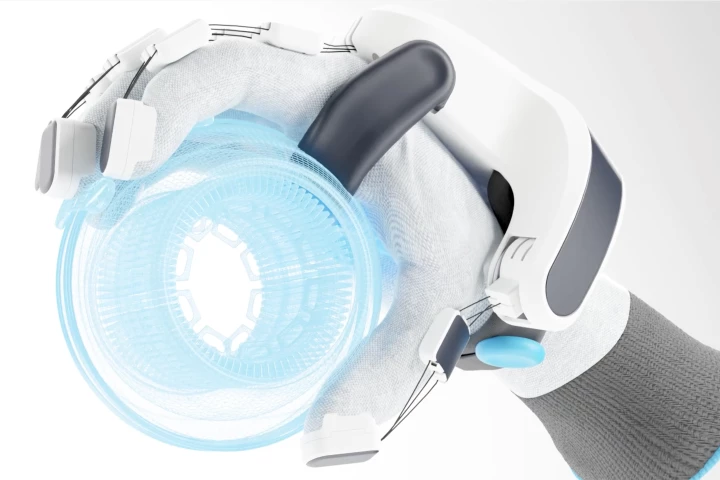Gloves
-
Folks weakened by osteoarthritis or myositis may need help with everyday tasks like watering plants, filling the kettle or peeling potatoes. The Carbonhand robo-glove is designed to support such activities, and is now available to everyone in the US.
-
Some folks prefer to get a grip on things to better understand concepts. Researchers have developed smart gloves for tactile learners that use haptic feedback and AI to teach users new skills, fast-track precision training and control robots remotely.
-
There are now a number of gloves that deliver tactile sensations to VR users' fingertips when they touch virtual objects. The Phantom glove is unique, however, in that it doesn't cover the fingers, leaving them free for real-world interactions.
-
Although we're moving away from being a throw-away society, single-use nitrile gloves are still widely utilized in healthcare settings. That may not always be the case, however, thanks to the development of reusable gloves that cook viruses.
-
SenseGlove has announced the upcoming release of Nova 2, the second generation of its innovative haptic force-feedback glove. The Nova 2 offers a more realistic VR experience and will be the first glove of its type to feature palm feedback.
-
While there are already haptic feedback VR gloves that provide a simulated sense of touch to users, they typically cost at least a few thousand dollars. The Pulse glove is aimed at making the tech more accessible, in that it's priced at just US$299.
-
Hand edema, which is a swelling of the fingers due to the accumulation of fluid, is typically treated via a hand massage performed by a therapist. A new finger-massaging glove, however, may offer a less costly and more accessible alternative.
-
According to UNICEF, the vast majority of stillbirths occur in poor countries. An experimental new pressure-sensing surgical glove may help reduce those numbers, by allowing clinicians to gauge the orientation of the baby within the womb.
-
It can be difficult for blind people to learn to read braille, as they don't have any way of seeing which character the dots that they're feeling represent. That's where the BrailleWear glove comes in, as it verbally tells them.
-
While technology is making strides in absorbing our eyes and ears in virtual worlds, it’s harder to engage senses like touch. Engineers have now developed WeTac, a thin, wearable electronic "skin" that provides tactile feedback to users in VR and AR.
-
Redmond-based HaptX is preparing for business in the metaverse age with the launch of a pair of "ground-breaking" haptic gloves that allow enterprise users to get to grips with objects in the virtual workplace.
-
Scientists have developed a glove for gripping underwater objects that takes its design cues from an octopus, featuring rubber suckers and a sophisticated sensing capability that mimic the sea creature's unique muscular and nervous systems.
Load More











